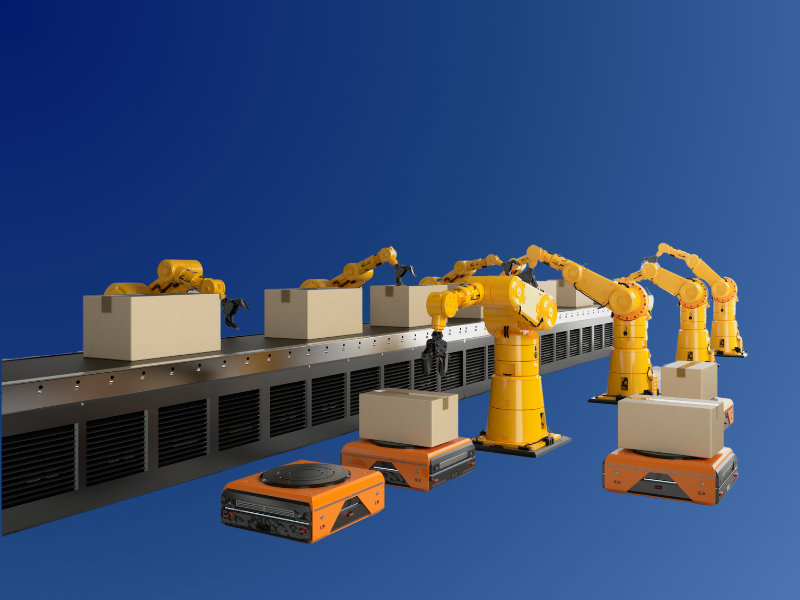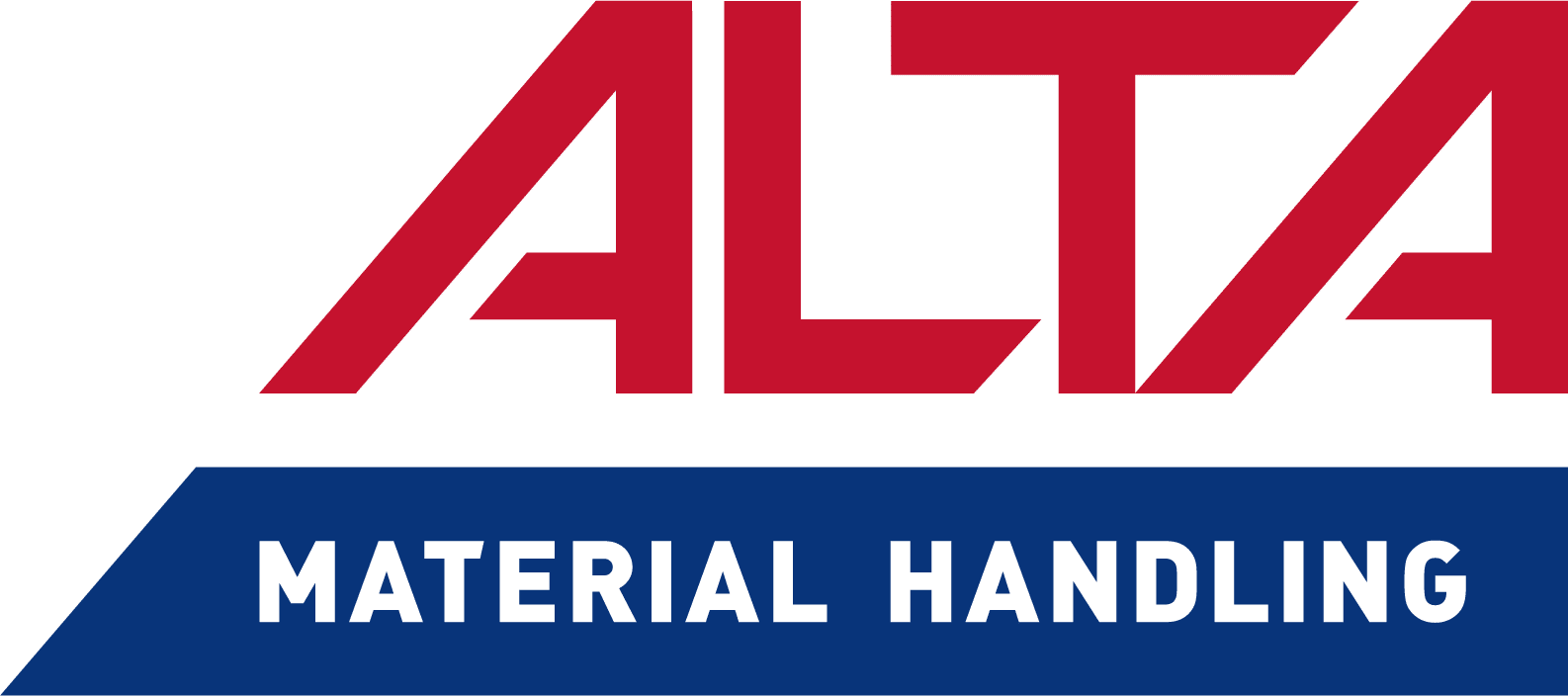When most people think about warehouse automation, they imagine robots speeding through aisles, automated storage systems scaling to the ceiling, or complex networks of conveyors replacing entire workforces.
But for most growing operations, the most practical place to start isn’t in the aisles — it’s at the end.
End-of-line automation—the stage where picked items are packed, labeled, sorted, and shipped—is one of the most impactful and cost-effective ways to boost productivity without overhauling your entire facility.
In this post, we’ll break down what end-of-line automation is, why it matters, and how to approach it in phases to maximize ROI and minimize risk.
What Is End-of-Line Automation?
End-of-line automation refers to the technology and processes that take over after items have been picked. It’s the last stretch before an order leaves your building, and it typically includes:
- Packing — placing picked items into shipping containers or cartons
- Weighing and dimensioning — measuring packages for shipping accuracy
- Labeling — printing and applying shipping labels
- Inspection — checking for damage or missing items
- Case sealing — closing boxes with tape or glue
- Palletizing — stacking cartons onto pallets
- Sortation — directing packages to the correct dock or truck
This is the stage where accuracy, speed, and consistency matter most — because mistakes here don’t just slow down operations, they directly affect customer satisfaction and shipping costs.
Why End-of-Line Automation Makes Sense First
Many companies start their automation journey by tackling picking or storage, but that can be complex, expensive, and disruptive. End-of-line automation, on the other hand, is:
1. Low Disruption, High Impact
You can often introduce end-of-line systems without reconfiguring your entire warehouse layout. Technologies like automatic labelers or robotic palletizers can be added at the end of your current line with minimal downtime.
2. Fast ROI
Because the end-of-line directly affects your ability to ship on time, any time saved translates immediately into cost savings. Many companies see a return on investment in 12–24 months.
3. Scalable
Start with one system—say, automatic labeling—and build from there. As order volumes grow, you can add AMRs (Autonomous Mobile Robots), conveyor sortation, or robotic palletizers without touching your upstream workflows.
Common Technologies in End-of-Line Automation
Here are some of the most effective tools and systems used in end-of-line setups:
1. Automated Labeling Systems
These machines automatically print and apply shipping labels with precision and speed, reducing mislabeling errors and labor costs.
2. Dimensioning and Weighing Systems
Capture accurate package data in real-time to avoid carrier chargebacks and overpaying for shipping.
3. Case Sealers and Bagging Machines
Automate sealing operations to increase consistency and reduce the time needed to close packages.
4. Robotic Palletizers
Stack boxes or cases on pallets in a precise configuration, improving stability and eliminating manual heavy lifting.
5. Conveyor Systems and AMRs
Move boxes from packing stations to sorting zones or loading docks efficiently without the need for forklifts or carts.
6. Vision Inspection Systems
Detect damage, verify barcode scans, and ensure compliance before shipping—essential for regulated industries or high-value goods.
The ROI of Getting It Right
Here’s what businesses typically gain with end-of-line automation:
- Reduced labor costs: One automated system can replace multiple repetitive tasks, freeing workers for value-added jobs.
- Fewer errors: Consistent, machine-driven labeling and dimensioning minimize the risk of mis-shipments and chargebacks.
- Higher throughput: Packages move faster through the line, enabling higher daily order volumes.
- Improved employee safety: Automation reduces repetitive strain and eliminates the need to lift or move heavy boxes.
- Better SLA compliance: Especially important for 3PLs (third-party logistics providers), where missed delivery windows can result in penalties.
When Should You Automate the End of Your Line?
Here are some indicators that you’re ready:
- You ship 1,000 or more orders per day
- You have a growing number of pick-and-pack workers
- Your facility frequently incurs shipping chargebacks
- You’re planning to expand order volume but not facility size
- You’ve had errors in labeling, packing, or sortation that impacted customer satisfaction
Even if you’re not ready for a full-blown automation rollout, starting at the end of the line gives you a modular entry point to evolve from.
Case Example: A Scalable Approach for a 3PL
A mid-sized third-party logistics (3PL) company handling ecommerce fulfillment recently faced seasonal volume surges that tripled their daily orders. Instead of overhauling their warehouse, they began with two key upgrades:
- Automated label applicators replaced manual shipping label printing and applying
- Robotic palletizers were installed to handle outbound carton stacking
Within three months, they saw a 40% reduction in labor costs and a 25% increase in throughput. And perhaps most importantly, they eliminated late shipments during their peak season — boosting client retention and satisfaction.
How Software Ties It All Together
You can’t automate intelligently without the right software infrastructure. That’s where Warehouse Control Systems (WCS) come into play.
A WCS acts as the glue that connects your automation equipment—labelers, scanners, dimensioners, sorters—with your Warehouse Management System (WMS). It ensures the real-time coordination required to make everything run smoothly.
At PeakLogix, our PickPro WCS is designed to manage end-of-line systems with reliability, flexibility, and full IT/OT integration. It ensures that your investment in automation isn’t just fast—it’s smart and scalable.
Start Small, Scale Strategically
One of the biggest myths in automation is that it has to be all or nothing. The truth? Most of the most successful automation strategies begin with one high-leverage process—and that process is often at the end of the line.
You don’t need robots in every aisle or AI-powered drones overhead. You just need the right tools to pack, label, and ship more accurately, safely, and quickly than you did yesterday.
And once you’ve conquered that step, your operation is perfectly positioned to expand automation upstream.
Final Thought: The End of the Line Is Just the Beginning
Warehouse automation can be overwhelming if you try to implement everything at once. But it doesn’t have to be.
End-of-line automation offers a focused, fast, and flexible way to make a measurable impact on your operation. It improves what matters most—order accuracy, shipping speed, labor efficiency, and customer experience.
So if you’re looking to get started, don’t overthink it. The smartest move might be at the end of your process.
Because in warehouse automation, the end of the line is often where smarter fulfillment begins.


